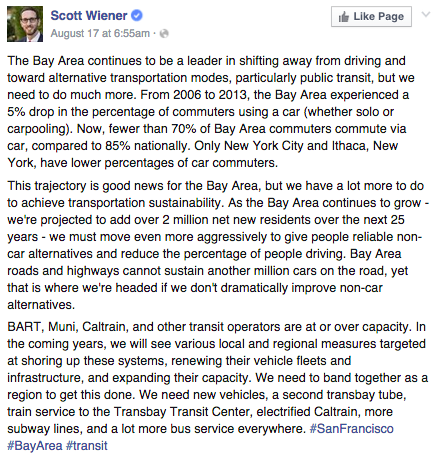SAN FRANCISCO—According to the Census Bureau’s American Community Survey, the San Francisco Bay Area made a dramatic shift from solo automobile commuting to using alternative forms of transportation between the years of 2006 and 2013.
According to the report, the population of commuters who commuted by private car dropped about 3.8 percent; from 73.6 percent in 2006 to 69.8 percent in 2013. This statistic made the San Francisco and East Bay—Oakland-Hayward areas have the third lowest population of solo-auto commuters in the United States, following New York City (56.9 percent) and Ithaca, New York (68.7 percent).
According to the Census report, the alternative transportation statistics are reported to be lower than the national average solo commuting rate of 76.4 percent. The Census reported that on a national level, about 9.4 percent of commuters carpool to work and 5.2 percent use public transportation, 2.8 percent of commuters walk, 0.6 percent bike and a remaining 1.26 percent use other unreported means.

The San Francisco Board of Supervisors member, Scott Wiener, spoke to Census report’s findings, stating in a Facebook post that ,“The Bay Area continues to be a leader in shifting way from driving and toward alternative transportation modes, particularly public transit, but we need to do much more… The trajectory is good news for the Bay Area, but we have a lot more to do to achieve transportation sustainability.” Wiener added that the Bay Area is projected to have over 2 million new residents move into the city over the next 25 years, “we must move even more aggressively to give people reliable non-car alternatives and reduce the percentage of people driving.”
According to Wiener, public transit lines such as the Bay Area Railway Transit (BART), San Francisco Municipal Transportation Agency, and Caltrains are at or over capacity. However the city can expect to see multiple local and regional measures focused on supporting the improvement of these systems to expand their capacity
.







